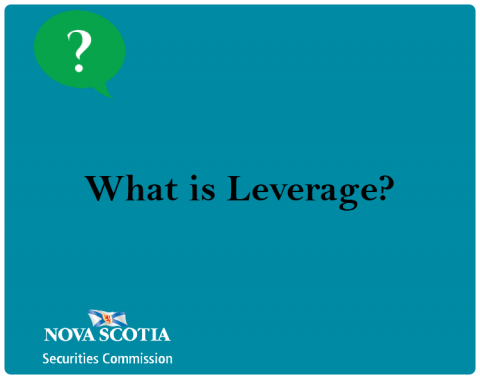Submitted by nsscadmin on

In a recent blog post we used the term leverage. One of our readers was looking for a more definitive definition of leverage and how it works.
The Nova Scotia Securities Commission does not provide investment advice. We are not advising, or recommending investors to use leverage. This post is simply to educate investors on how leverage works so they can be an informed investor when making investment decisions.
Financial leverage appears in many forms. A common form is having a mortgage when you purchase a home.
Leverage also appears in investing. One form is when you borrow money, say a loan from your bank or a margin account, to invest. This is done to increase the potential return on the investment. Of course, this can also lead to an increased loss from the investment, which is why leverage is risky.
Other forms of leverage appear in using various financial instruments including options, futures and margin accounts. We discussed margin accounts in a previous post.
Companies also use leverage to finance their business. When a company issues bonds to raise capital they are essentially employing a form of financial leverage. When a person or company is highly leveraged they have taken on more debt than equity. This can be extremely risky as they now owe more money than they have in shareholder equity. If you’re thinking about investing in a company you can determine how leveraged they are by examining their balance sheet and assessing the amount of debt relative to the amount of equity.
If you remember one thing about leverage it should be that it can increase both gains and losses when investing. When using leverage, losses are magnified. Any losses you incur will be greater than if you made the same investment without utilizing leverage. Before making any investment, be sure you know the risks of the investment, and your risk tolerance. Your risk tolerance is your ability to withstand losses when investments perform poorly. When investing, whether utilizing leverage or not, ensure that your risk tolerance is at a level where you can bear any investment losses.
